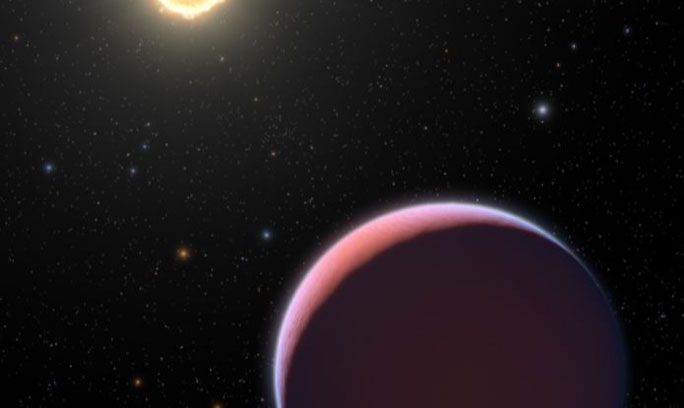The largest and lightest planet ever found currently holds the record.
Located 1,232 light-years away from Earth, scientists refer to the planet WASP-193b as “one of the strangest” in the universe. It is a world that is almost entirely made of clouds.
According to an international research team led by astronomer Khalid Barkaoui from the University of Liège (Belgium), WASP-193 can be imagined as a cloud ball or a giant cotton candy.
This planet is 50% larger than the largest planet in our Solar System, Jupiter, yet its mass is only… 0.139 times that of Jupiter.

Cotton candy planet WASP-193b – (Graphic from NASA).
From the size of this planet, scientists deduce that its density is only 0.059 g/cm3, which is over a hundred times lighter than Earth (5.51 g/cm3). This figure is comparable to 1/7 of Jupiter’s mass. It is worth noting that while Jupiter is 50 times larger than Earth, its material density is only about 1% that of Earth.
According to Science Alert, researchers conclude that it is indeed a cloud planet, almost entirely made of clouds, possibly with a very small core at the center.
Previously, some super-light planets have been discovered, but that condition was only temporary, as their parent stars were still young, just tens of millions of years old, making them too hot and causing the atmosphere of the nearby planet to inflate.
WASP-193b orbits its parent star, which is similar to the Sun in size and temperature, every 6.25 days, indicating a very close proximity.
However, according to theories and models validated by other inflated planets, after several million to tens of millions of years of inflation, this planet should have had its entire atmosphere stripped away by its parent star and become a small rocky body.
The absurdity lies in the fact that the parent star WASP-193 of this “cotton candy planet” is 6 billion years old, which means the age of WASP-193b is approximately the same.
“WASP-193b is the second-lowest density planet ever discovered, following Kepler-51d, which is significantly smaller,” said Khalid Barkaoui. “We cannot replicate a giant gas planet with such low material density in simulation environments.”
The researchers believe that WASP-193b is composed of hydrogen and helium, similar to some other giant gas planets, but they are unsure why the size of WASP-193b is so large.
This is a puzzle that the scientific team has yet to solve, but they believe that when the James Webb Space Telescope, the most powerful telescope in the world, targets WASP-139b, it will help provide more detailed data and bring the anticipated answers.
Regardless of what the answer may be, “the cotton candy planet” is a unique and fascinating discovery, showcasing the incredible diversity of the world of planets.
- China announces breakthrough invention: Technology application creates “unprecedented durable materials”
- A type of leaf is a “golden herb” that helps lower blood sugar, detoxify the kidneys, eliminate uric acid, and prevent heart disease
- The largest land mammal to ever live is Paraceratherium – How truly large was it?



















































